
SECOND QUARTER 2022 EARNINGS PRESENTATION August 16, 2022 1 JanusIntl.com
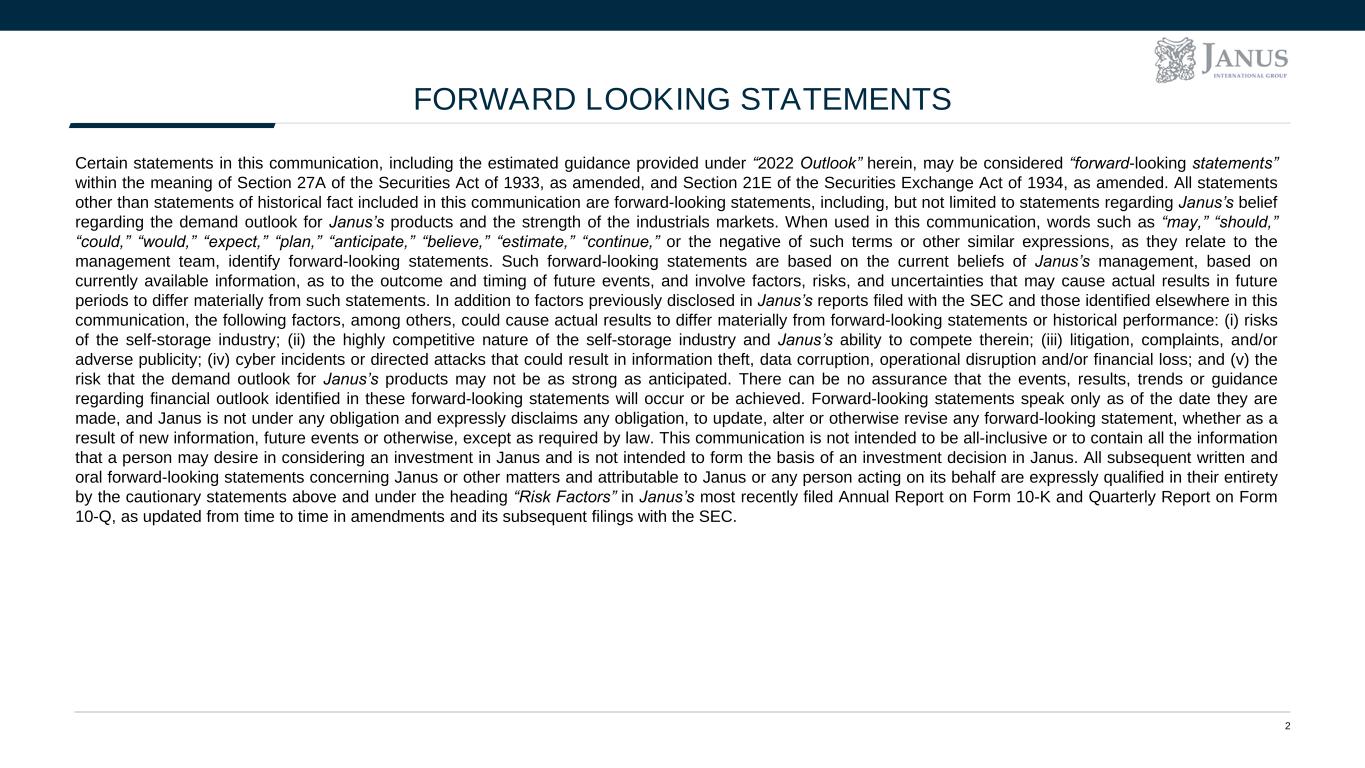
2 FORWARD LOOKING STATEMENTS Certain statements in this communication, including the estimated guidance provided under “2022 Outlook” herein, may be considered “forward-looking statements” within the meaning of Section 27A of the Securities Act of 1933, as amended, and Section 21E of the Securities Exchange Act of 1934, as amended. All statements other than statements of historical fact included in this communication are forward-looking statements, including, but not limited to statements regarding Janus’s belief regarding the demand outlook for Janus’s products and the strength of the industrials markets. When used in this communication, words such as “may,” “should,” “could,” “would,” “expect,” “plan,” “anticipate,” “believe,” “estimate,” “continue,” or the negative of such terms or other similar expressions, as they relate to the management team, identify forward-looking statements. Such forward-looking statements are based on the current beliefs of Janus’s management, based on currently available information, as to the outcome and timing of future events, and involve factors, risks, and uncertainties that may cause actual results in future periods to differ materially from such statements. In addition to factors previously disclosed in Janus’s reports filed with the SEC and those identified elsewhere in this communication, the following factors, among others, could cause actual results to differ materially from forward-looking statements or historical performance: (i) risks of the self-storage industry; (ii) the highly competitive nature of the self-storage industry and Janus’s ability to compete therein; (iii) litigation, complaints, and/or adverse publicity; (iv) cyber incidents or directed attacks that could result in information theft, data corruption, operational disruption and/or financial loss; and (v) the risk that the demand outlook for Janus’s products may not be as strong as anticipated. There can be no assurance that the events, results, trends or guidance regarding financial outlook identified in these forward-looking statements will occur or be achieved. Forward-looking statements speak only as of the date they are made, and Janus is not under any obligation and expressly disclaims any obligation, to update, alter or otherwise revise any forward-looking statement, whether as a result of new information, future events or otherwise, except as required by law. This communication is not intended to be all-inclusive or to contain all the information that a person may desire in considering an investment in Janus and is not intended to form the basis of an investment decision in Janus. All subsequent written and oral forward-looking statements concerning Janus or other matters and attributable to Janus or any person acting on its behalf are expressly qualified in their entirety by the cautionary statements above and under the heading “Risk Factors” in Janus’s most recently filed Annual Report on Form 10-K and Quarterly Report on Form 10-Q, as updated from time to time in amendments and its subsequent filings with the SEC.
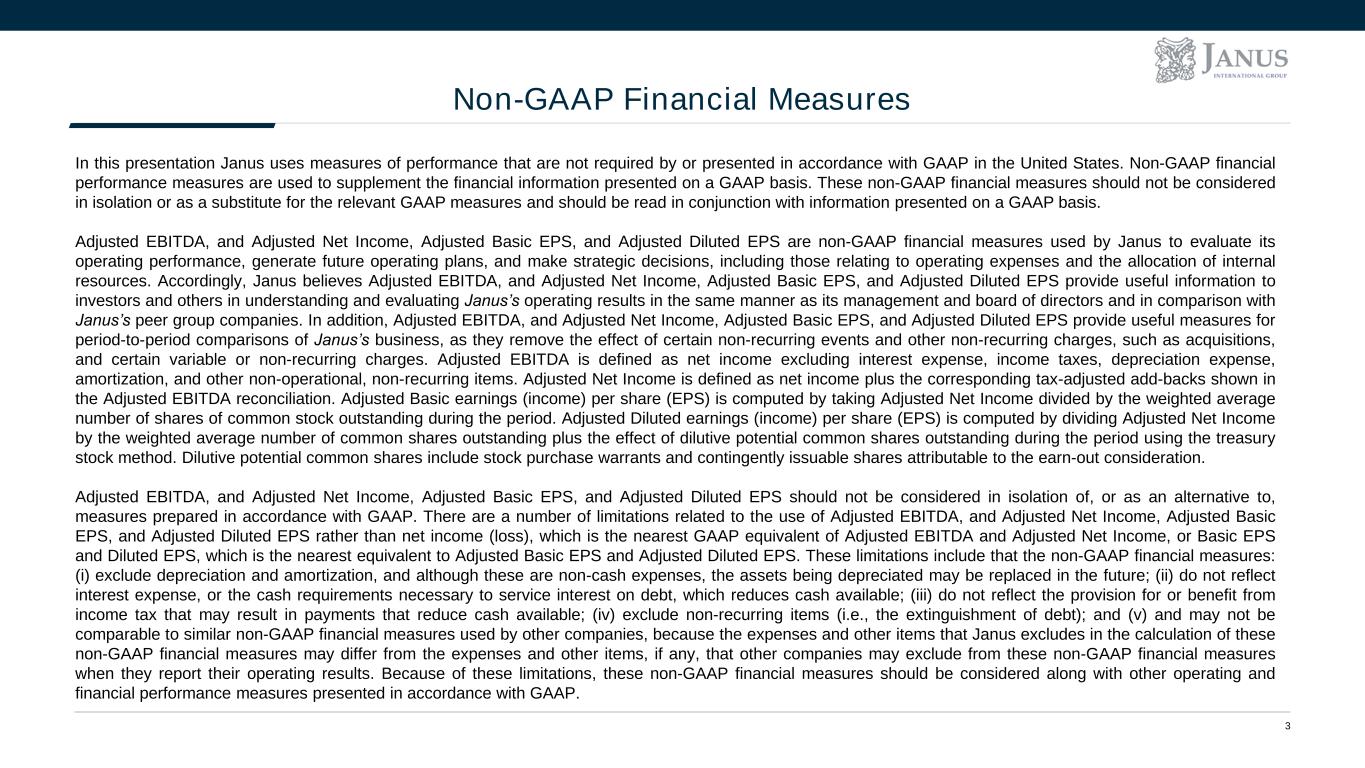
3 Non-GAAP Financial Measures In this presentation Janus uses measures of performance that are not required by or presented in accordance with GAAP in the United States. Non-GAAP financial performance measures are used to supplement the financial information presented on a GAAP basis. These non-GAAP financial measures should not be considered in isolation or as a substitute for the relevant GAAP measures and should be read in conjunction with information presented on a GAAP basis. Adjusted EBITDA, and Adjusted Net Income, Adjusted Basic EPS, and Adjusted Diluted EPS are non-GAAP financial measures used by Janus to evaluate its operating performance, generate future operating plans, and make strategic decisions, including those relating to operating expenses and the allocation of internal resources. Accordingly, Janus believes Adjusted EBITDA, and Adjusted Net Income, Adjusted Basic EPS, and Adjusted Diluted EPS provide useful information to investors and others in understanding and evaluating Janus’s operating results in the same manner as its management and board of directors and in comparison with Janus’s peer group companies. In addition, Adjusted EBITDA, and Adjusted Net Income, Adjusted Basic EPS, and Adjusted Diluted EPS provide useful measures for period-to-period comparisons of Janus’s business, as they remove the effect of certain non-recurring events and other non-recurring charges, such as acquisitions, and certain variable or non-recurring charges. Adjusted EBITDA is defined as net income excluding interest expense, income taxes, depreciation expense, amortization, and other non-operational, non-recurring items. Adjusted Net Income is defined as net income plus the corresponding tax-adjusted add-backs shown in the Adjusted EBITDA reconciliation. Adjusted Basic earnings (income) per share (EPS) is computed by taking Adjusted Net Income divided by the weighted average number of shares of common stock outstanding during the period. Adjusted Diluted earnings (income) per share (EPS) is computed by dividing Adjusted Net Income by the weighted average number of common shares outstanding plus the effect of dilutive potential common shares outstanding during the period using the treasury stock method. Dilutive potential common shares include stock purchase warrants and contingently issuable shares attributable to the earn-out consideration. Adjusted EBITDA, and Adjusted Net Income, Adjusted Basic EPS, and Adjusted Diluted EPS should not be considered in isolation of, or as an alternative to, measures prepared in accordance with GAAP. There are a number of limitations related to the use of Adjusted EBITDA, and Adjusted Net Income, Adjusted Basic EPS, and Adjusted Diluted EPS rather than net income (loss), which is the nearest GAAP equivalent of Adjusted EBITDA and Adjusted Net Income, or Basic EPS and Diluted EPS, which is the nearest equivalent to Adjusted Basic EPS and Adjusted Diluted EPS. These limitations include that the non-GAAP financial measures: (i) exclude depreciation and amortization, and although these are non-cash expenses, the assets being depreciated may be replaced in the future; (ii) do not reflect interest expense, or the cash requirements necessary to service interest on debt, which reduces cash available; (iii) do not reflect the provision for or benefit from income tax that may result in payments that reduce cash available; (iv) exclude non-recurring items (i.e., the extinguishment of debt); and (v) and may not be comparable to similar non-GAAP financial measures used by other companies, because the expenses and other items that Janus excludes in the calculation of these non-GAAP financial measures may differ from the expenses and other items, if any, that other companies may exclude from these non-GAAP financial measures when they report their operating results. Because of these limitations, these non-GAAP financial measures should be considered along with other operating and financial performance measures presented in accordance with GAAP.

AGENDA 4 Ramey Jackson Chief Executive Officer, Janus Business Overview Anselm Wong Chief Financial Officer, Janus Financial Overview & Outlook
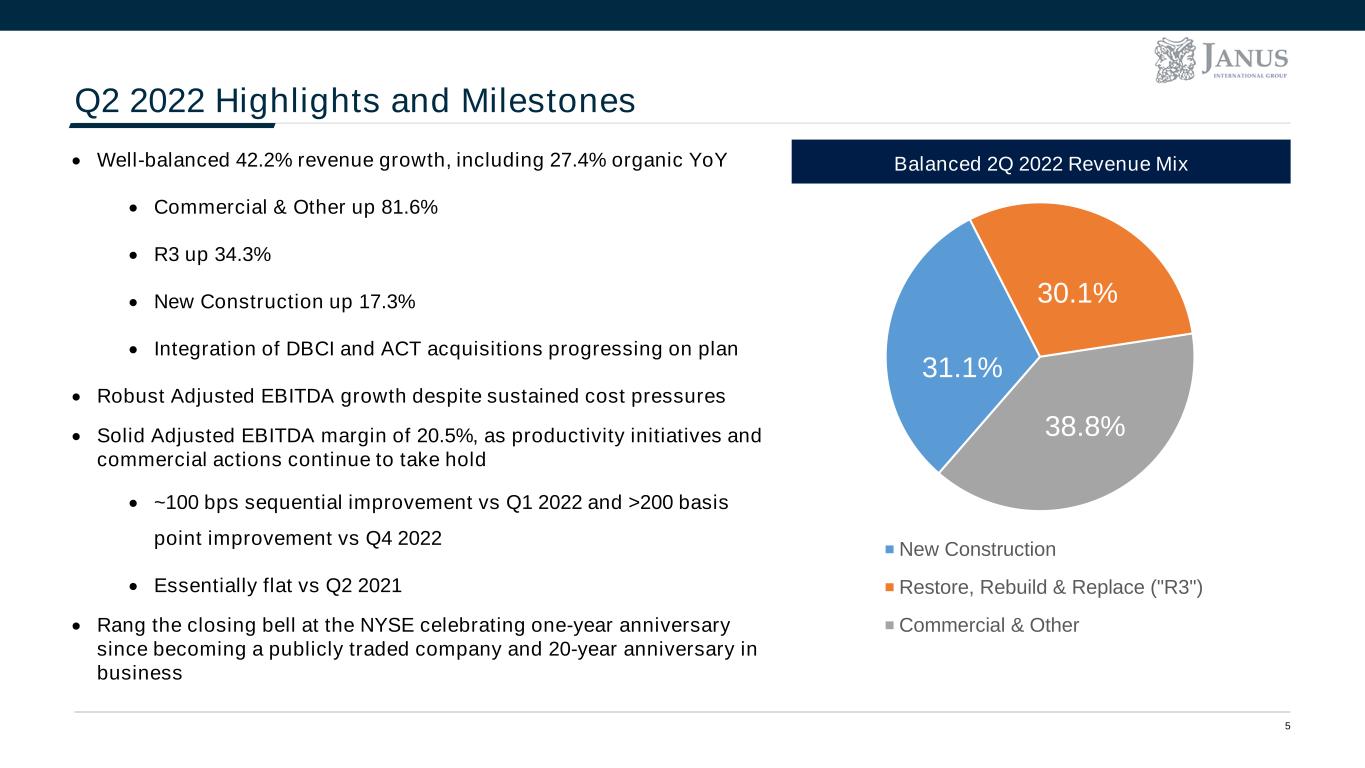
5 Q2 2022 Highlights and Milestones • Well-balanced 42.2% revenue growth, including 27.4% organic YoY • Commercial & Other up 81.6% • R3 up 34.3% • New Construction up 17.3% • Integration of DBCI and ACT acquisitions progressing on plan • Robust Adjusted EBITDA growth despite sustained cost pressures • Solid Adjusted EBITDA margin of 20.5%, as productivity initiatives and commercial actions continue to take hold • ~100 bps sequential improvement vs Q1 2022 and >200 basis point improvement vs Q4 2022 • Essentially flat vs Q2 2021 • Rang the closing bell at the NYSE celebrating one-year anniversary since becoming a publicly traded company and 20-year anniversary in business Balanced 2Q 2022 Revenue Mix 31.1% 30.1% 38.8% New Construction Restore, Rebuild & Replace ("R3") Commercial & Other
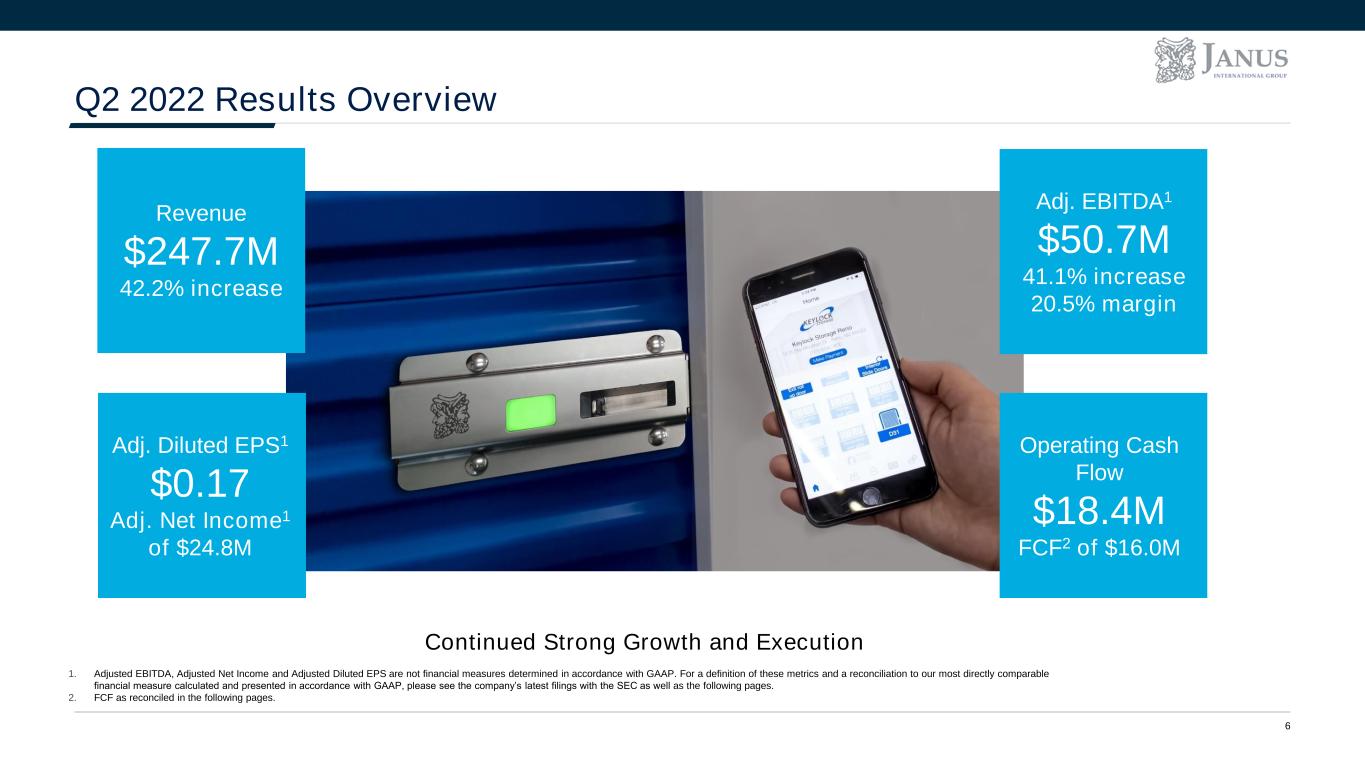
6 Q2 2022 Results Overview 1. Adjusted EBITDA, Adjusted Net Income and Adjusted Diluted EPS are not financial measures determined in accordance with GAAP. For a definition of these metrics and a reconciliation to our most directly comparable financial measure calculated and presented in accordance with GAAP, please see the company’s latest filings with the SEC as well as the following pages. 2. FCF as reconciled in the following pages. Continued Strong Growth and Execution Adj. EBITDA1 $50.7M 41.1% increase 20.5% margin Revenue $247.7M 42.2% increase Adj. Diluted EPS1 $0.17 Adj. Net Income1 of $24.8M Operating Cash Flow $18.4M FCF2 of $16.0M
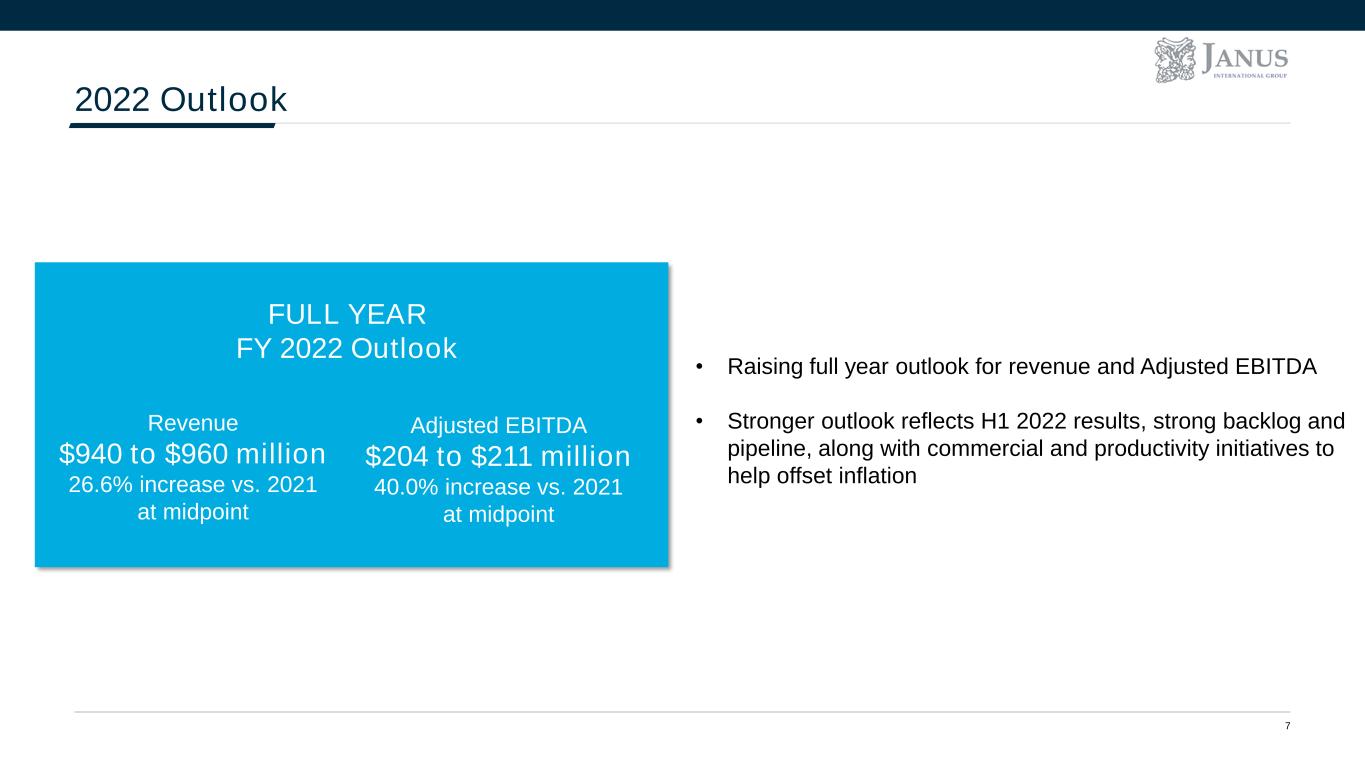
7 2022 Outlook FULL YEAR FY 2022 Outlook Revenue $940 to $960 million 26.6% increase vs. 2021 at midpoint Adjusted EBITDA $204 to $211 million 40.0% increase vs. 2021 at midpoint • Raising full year outlook for revenue and Adjusted EBITDA • Stronger outlook reflects H1 2022 results, strong backlog and pipeline, along with commercial and productivity initiatives to help offset inflation
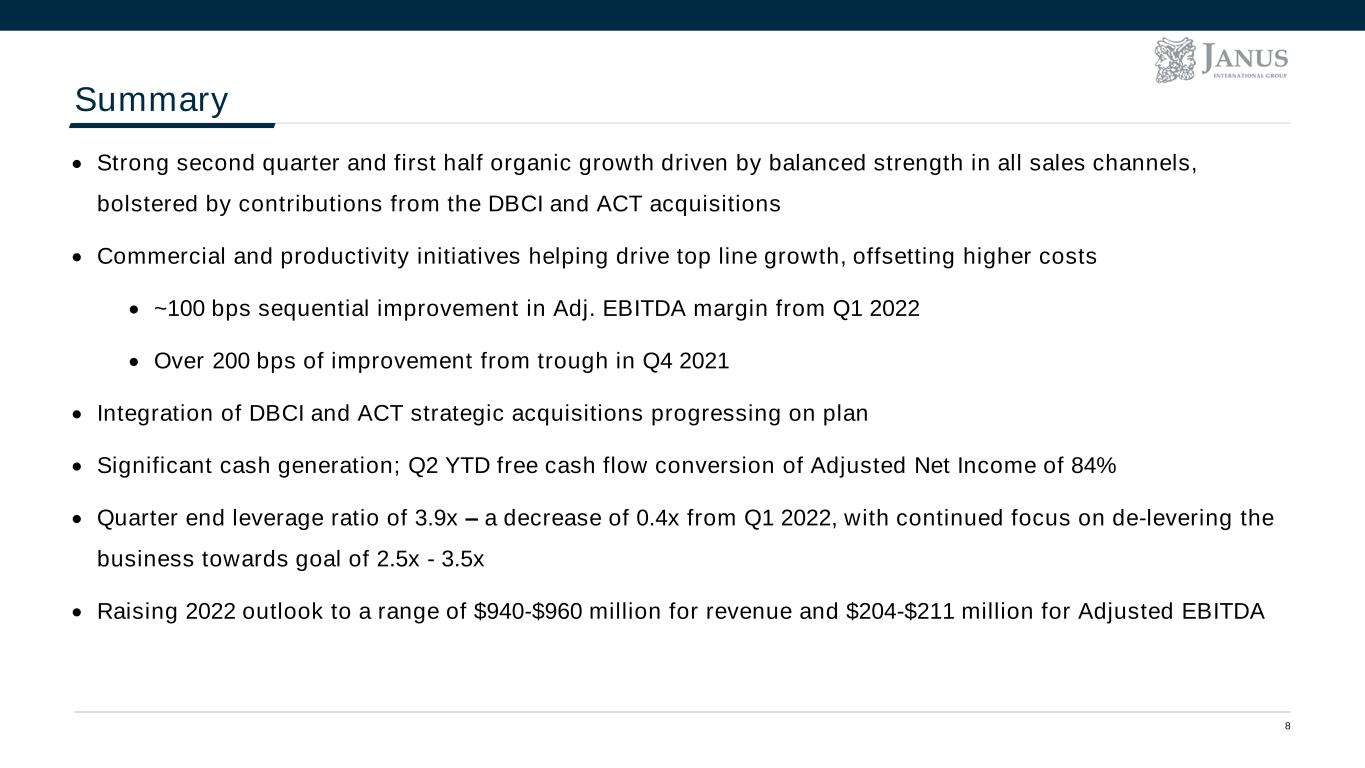
8 Summary • Strong second quarter and first half organic growth driven by balanced strength in all sales channels, bolstered by contributions from the DBCI and ACT acquisitions • Commercial and productivity initiatives helping drive top line growth, offsetting higher costs • ~100 bps sequential improvement in Adj. EBITDA margin from Q1 2022 • Over 200 bps of improvement from trough in Q4 2021 • Integration of DBCI and ACT strategic acquisitions progressing on plan • Significant cash generation; Q2 YTD free cash flow conversion of Adjusted Net Income of 84% • Quarter end leverage ratio of 3.9x – a decrease of 0.4x from Q1 2022, with continued focus on de-levering the business towards goal of 2.5x - 3.5x • Raising 2022 outlook to a range of $940-$960 million for revenue and $204-$211 million for Adjusted EBITDA
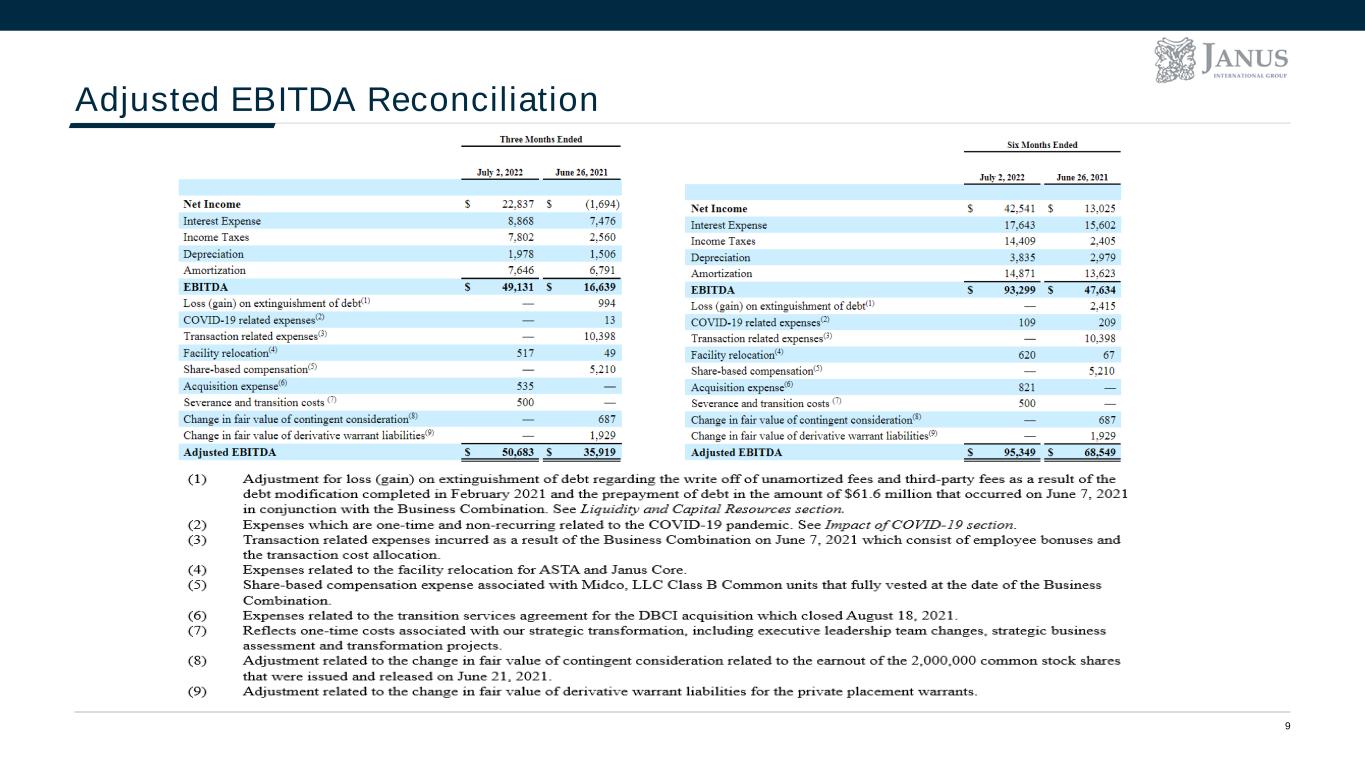
9 Adjusted EBITDA Reconciliation
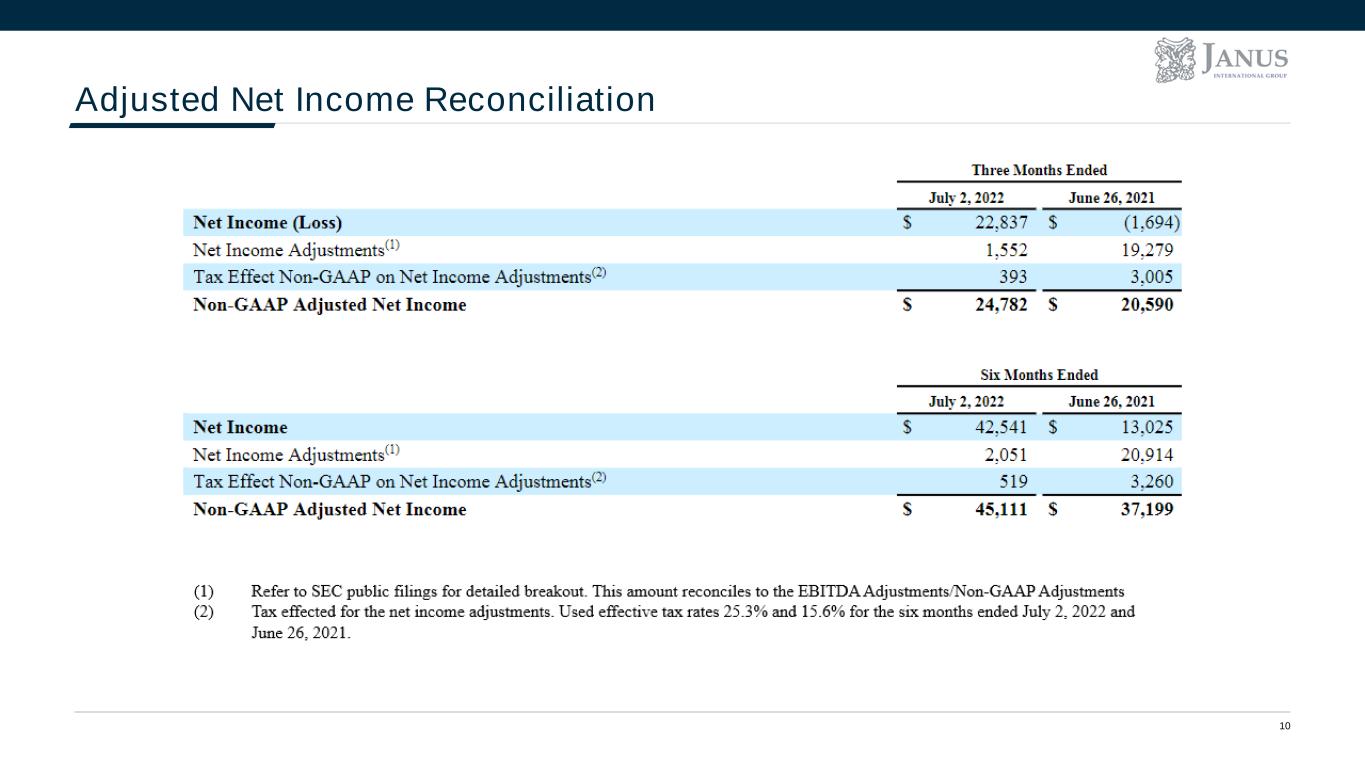
10 Adjusted Net Income Reconciliation
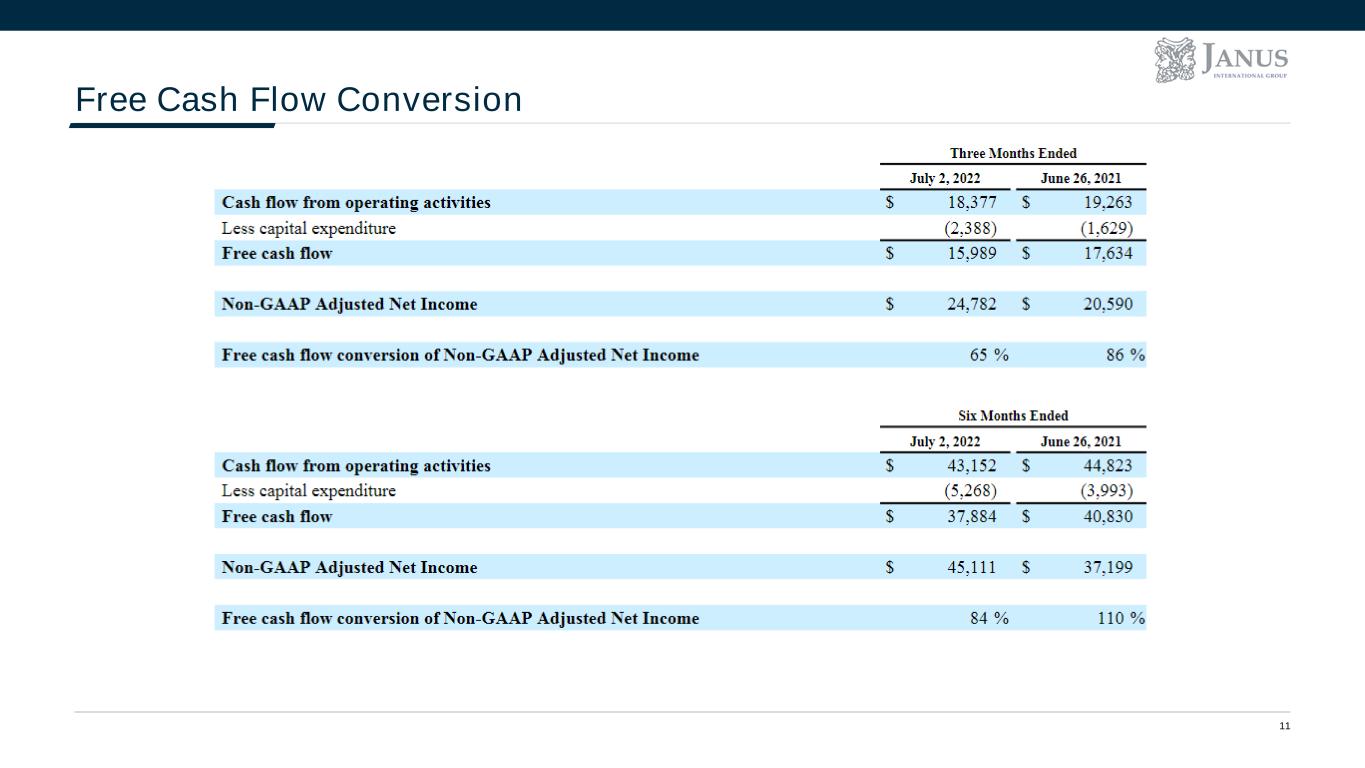
11 Free Cash Flow Conversion